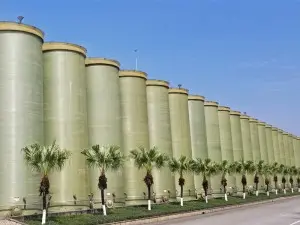
-
 Afrikaans
Afrikaans -
 Albanian
Albanian -
 Amharic
Amharic -
 Arabic
Arabic -
 Armenian
Armenian -
 Azerbaijani
Azerbaijani -
 Basque
Basque -
 Belarusian
Belarusian -
 Bengali
Bengali -
 Bosnian
Bosnian -
 Bulgarian
Bulgarian -
 Catalan
Catalan -
 Cebuano
Cebuano -
 China
China -
 China (Taiwan)
China (Taiwan) -
 Corsican
Corsican -
 Croatian
Croatian -
 Czech
Czech -
 Danish
Danish -
 Dutch
Dutch -
 English
English -
 Esperanto
Esperanto -
 Estonian
Estonian -
 Finnish
Finnish -
 French
French -
 Frisian
Frisian -
 Galician
Galician -
 Georgian
Georgian -
 German
German -
 Greek
Greek -
 Gujarati
Gujarati -
 Haitian Creole
Haitian Creole -
 hausa
hausa -
 hawaiian
hawaiian -
 Hebrew
Hebrew -
 Hindi
Hindi -
 Miao
Miao -
 Hungarian
Hungarian -
 Icelandic
Icelandic -
 igbo
igbo -
 Indonesian
Indonesian -
 irish
irish -
 Italian
Italian -
 Japanese
Japanese -
 Javanese
Javanese -
 Kannada
Kannada -
 kazakh
kazakh -
 Khmer
Khmer -
 Rwandese
Rwandese -
 Korean
Korean -
 Kurdish
Kurdish -
 Kyrgyz
Kyrgyz -
 Lao
Lao -
 Latin
Latin -
 Latvian
Latvian -
 Lithuanian
Lithuanian -
 Luxembourgish
Luxembourgish -
 Macedonian
Macedonian -
 Malgashi
Malgashi -
 Malay
Malay -
 Malayalam
Malayalam -
 Maltese
Maltese -
 Maori
Maori -
 Marathi
Marathi -
 Mongolian
Mongolian -
 Myanmar
Myanmar -
 Nepali
Nepali -
 Norwegian
Norwegian -
 Norwegian
Norwegian -
 Occitan
Occitan -
 Pashto
Pashto -
 Persian
Persian -
 Polish
Polish -
 Portuguese
Portuguese -
 Punjabi
Punjabi -
 Romanian
Romanian -
 Russian
Russian -
 Samoan
Samoan -
 Scottish Gaelic
Scottish Gaelic -
 Serbian
Serbian -
 Sesotho
Sesotho -
 Shona
Shona -
 Sindhi
Sindhi -
 Sinhala
Sinhala -
 Slovak
Slovak -
 Slovenian
Slovenian -
 Somali
Somali -
 Spanish
Spanish -
 Sundanese
Sundanese -
 Swahili
Swahili -
 Swedish
Swedish -
 Tagalog
Tagalog -
 Tajik
Tajik -
 Tamil
Tamil -
 Tatar
Tatar -
 Telugu
Telugu -
 Thai
Thai -
 Turkish
Turkish -
 Turkmen
Turkmen -
 Ukrainian
Ukrainian -
 Urdu
Urdu -
 Uighur
Uighur -
 Uzbek
Uzbek -
 Vietnamese
Vietnamese -
 Welsh
Welsh -
 Bantu
Bantu -
 Yiddish
Yiddish -
 Yoruba
Yoruba -
 Zulu
Zulu
fiberglass fitting
The Importance and Applications of Fiberglass Fittings
Fiberglass fittings have become a critical component in various industries due to their unique properties and versatility. Made from reinforced plastic, fiberglass fittings offer a combination of strength, durability, and lightweight characteristics that make them ideal for a wide range of applications. As technology enhances materials, fiberglass fittings are increasingly seen as a superior choice over traditional materials like metal and PVC.
One of the most significant advantages of fiberglass fittings is their corrosion resistance. Unlike metals, which can corrode when exposed to moisture or chemicals, fiberglass is inherently resistant to rust and chemical degradation. This makes fiberglass fittings particularly beneficial in industries such as chemical processing, wastewater treatment, and marine applications, where exposure to harsh environments is common. The non-corrosive nature of fiberglass also translates to lower maintenance costs and longer service life, offering an economically viable solution over time.
Additionally, fiberglass fittings have excellent insulation properties. They do not conduct electricity, making them a safe choice in electrical applications and reducing the risk of electrical hazards. The insulating properties of fiberglass also mean that the fittings can withstand extreme temperatures without compromising structural integrity. This temperature tolerance allows fiberglass fittings to be used in both cold and hot applications, providing flexibility for various engineering designs.
In terms of weight, fiberglass fittings are significantly lighter than their metal counterparts
. This lightweight nature simplifies transportation and installation, reducing labor costs and improving overall project efficiency. Construction teams can easily handle and manipulate fiberglass components, which is particularly advantageous in projects where space and weight constraints are critical.fiberglass fitting

Moreover, fiberglass fittings can be molded into various shapes and sizes, allowing for a high degree of customization to meet specific industry needs. Whether for piping, ductwork, or specialized fittings, manufacturers can produce fiberglass components tailored to exact specifications, further enhancing their application across different sectors.
In the construction and infrastructure realm, fiberglass fittings have seen a rise in popularity for use in plumbing and drainage systems. Their resistance to scaling and biofouling ensures the longevity and reliability of these systems, particularly in high-demand environments such as schools, hospitals, and commercial buildings.
The renewable aspect of fiberglass production also aligns with the growing emphasis on sustainability within industries. When produced with recycled materials, fiberglass fittings can minimize their ecological impact while still delivering high performance. This approach contributes to a circular economy and reflects a broader commitment to environmental stewardship.
In conclusion, fiberglass fittings are indispensable in modern engineering and construction due to their durability, lightweight properties, corrosion resistance, and versatility. As industries continue to seek high-performance materials that can withstand challenging environments, the demand for fiberglass fittings is set to rise, affirming their role as a cornerstone of innovative solutions in construction and beyond.









